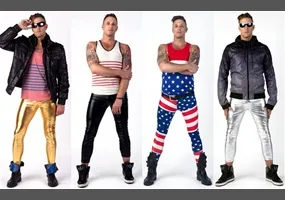ClayHR Explores the Human Side of AI in Hiring — Discover, Debate & Learn. Register Now
With millennial employees making up the majority of your company’s workforce, it has become rather important to incorporate their preferences in the corporate culture. Whether it is the vision of Steve Jobs in his trademark black mock turtleneck, blue jeans and New Balance sneakers, or the vision of Mark Zuckerberg in his informal clothing, the inescapable conclusion is that gone are the days when formal dressing up for work was preferred by the employees. They are dressing down for success! Hence the big question, do we even need a dress code policy now?
Millennial employees now prefer to work at a company that has a dress for the “day” or “role” policy. They choose to work in the attire based on how the schedule of the day looks like – dressing up in denim and t-shirts when they are in the back office or operations role and dressing up in shirts and trousers when meeting the customer.
The ratio of younger employees is going to increase in the coming years and the companies have to amend their policies accordingly. You may be trying to determine whether or not you even need a dress code policy for your employees. And if you, like many organizations, find that you simply do NOT need another policy, because after all there is no problem, then that is clearly a workable approach. Don’t solve a problem that doesn’t exist!
If on the other hand, you have encountered some “situations” that your no dress code policy is causing, then, well, you may be at a point that you need a policy after all. If that is the case, here are a few tips to help you create a dress code that is acceptable by your employees and also complements your culture.
Do not make the dress code policy too complicated. Keep things simple. Your corporate dress code policy should outline a simple dress outline, stating how to dress appropriately. You can clarify it better with the examples or a simple do’s and don’ts.
Tip: State the dress code in gender-neutral terms and give specific reference to clothing articles.



If you want to avoid the frustration that comes with poorly dressed employees, you’ve to clarify the expectations from the first day. Tell them how they’re expected to get dressed at the workplace and official events.
Don’t make any assumptions based on the interview getup that they’ll follow in the same fashion. Communicate clearly and brief them about the corporate dress code. Any changes in the policy should be formally communicated to the teams.
Adapting the dress code to the environment, circumstances, purposes, and objectives of a certain occasion will typically result in higher levels of satisfaction. This flexibility will allow employees to meet the demands of particular situations at times and meet their preferences at others.
For instance, you can ask employees to dress formally for an upcoming high-profile meeting. Or, if it’s a stay-at-work-place kind of a day, you can ask them to dress the way they want in an appropriate manner.
You can have a policy that has different requirements for different teams. People in a sales team who interact with customers directly may need to have a strictly regulated dress code than those who work behind the scenes. At the same time, you cannot run the risk of imposing a uniform as that can lead to dissatisfaction. It is better to implement a preferred standard while still giving employees some freedom to choose what to wear.
You can work on a corporate dress code policy that allows the millennial employees to dress in ‘smart casual’ attire. Smart casual is a combination of business casual, casual and formal business dress code. It mixes up the formal and casual clothing articles to bring out a dress that is informal but neat and professional.
Also, assign one day in a week where the employees are allowed to wear casual clothes like jeans and a shirt.
Giving lenient boundaries to your employees can help the millennial adopt the new code rather easily. You’ve to take into consideration their thought processes and preferences as well when working upon the dress code.
Allowing some flexibility in the dress code policy can help the young employees to become comfortable in the work setting.
We’re sure these tips will help you structure your dress code policy in a manner that is best suited for your young employees as well as your work setting.
An oft-repeated quote is: “It is not the most intellectual of the species that survives; it is not the strongest that survives, but the species that survives is the one that is able to adapt and adjust to the changing environment in which it finds itself.” Millenials are changing the rules of dress code, and organizations must embrace the change to retain the talent in the organization!
While this quote by Megginson about Darwin’s work is sometimes misattributed directly to Darwin, still it is helpful, and hopefully, you get the gist.